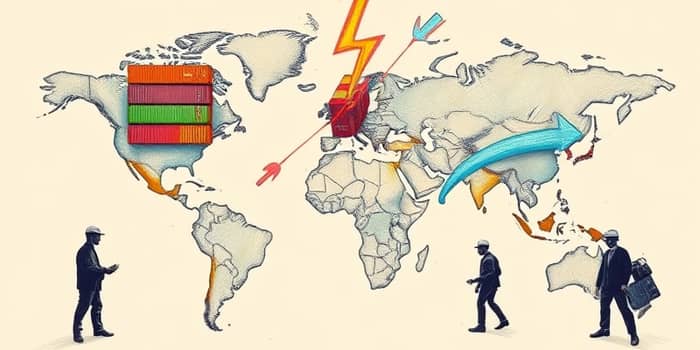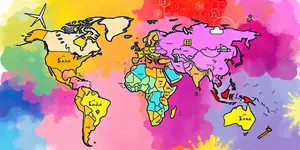
As global markets confront renewed strains, nations grapple with the fallout of protectionist measures and retaliatory duties. Trade policy decisions ripple across borders, affecting consumers, businesses, and governments alike.
In this complex landscape, understanding the forces at play is vital. By dissecting recent actions and their consequences, stakeholders can chart strategies to mitigate risks and promote sustainable growth.
According to leading forecasts, global merchandise trade expected to decline by 0.2% in 2025. Under a more pessimistic scenario driven by policy uncertainty and escalating duties, that figure could plunge to -1.5%.
Services trade growth has also been revised downward, now anticipated at just 4.0%. These contractions carry serious implications for millions of livelihoods, particularly in economies with high export dependence.
The North American region faces a projected 12.6% drop in exports, underscoring how most vulnerable economies suffer the most during a global slowdown.
At their core, tariffs are taxes imposed on international trade, primarily targeting imports to shield domestic industries. By design, they uplift prices at borders.
Their immediate impact is to raise prices of imported goods, benefiting local producers but driving up costs for households and enterprises that rely on foreign inputs.
Early in 2025, the United States unveiled significant tariff hikes targeting Canada, China, and Mexico, labeling them “reciprocal tariffs.” In response to pushback and retaliation, duties on Chinese goods, which tariffs on Chinese imports peaked at 145%, were scaled back to 30%.
These measures triggered immediate market turbulence: the U.S. dollar weakened sharply, commodity prices fluctuated, and investors scrambled to reassess risk exposure. Experts warn of potential to ignite the largest global trade war ever.
In turn, Canada, China, and the European Union imposed or threatened levies on roughly $330 billion of American exports, amplifying uncertainty around which tariffs will endure and which will be resolved through negotiation.
The bilateral relationship between the world’s two largest economies carries enormous weight. China ranks as a top export market for the US, while American technology and services remain vital to Chinese growth.
Following China’s WTO accession in 2001, trade flows surged. Yet longstanding concerns over job losses, technology transfer and subsidized competition have driven repeated confrontations.
Threats of levies up to 145% by the U.S. and 125% by China underscore the high stakes. Washington cites unfair practices, intellectual property violations, and national security risks, while Beijing warns of mutual harm.
On the domestic front, American households face direct hits. The average U.S. family confronts average US household sees a $1,200 increase in living costs annually as duties filter through supply chains.
Washington anticipates that tariffs in 2025 raise federal tax revenues by $156.2 billion, or 0.51% of GDP—the largest haul since 1993. Yet elevated prices squeeze real wages and dampen consumer spending.
Real incomes expected to fall by about 1% through 2028, with some states experiencing declines exceeding 3%. While manufacturing payrolls may tick upward, losses in agriculture and services often outweigh gains.
Globally, the IMF warns that a universal 10% U.S. tariff increase, met with retaliatory measures, would shrink American GDP by 1% and trim global output by 0.5% by 2026. About half of this contraction stems from negative sentiment and trade uncertainty.
Countries most exposed include Canada, Mexico, China, and Ireland. Trade-dependent and least-developed economies often bear the brunt, while investors seek safety in gold and government bonds.
Many 2025 tariff actions potentially violate WTO rules, reigniting disputes over enforcement and dispute settlement mechanisms. The World Trade Organization’s role faces renewed scrutiny.
Within the U.S., redistribution effects vary across states and groups. Some regions gain from protected industries, while others confront higher consumer prices and disrupted supply chains. The uneven impact complicates domestic politics.
Amid escalating tensions, proactive measures can ease frictions and support recovery. Policymakers, businesses, and civil society must collaborate to balance national interests with global stability.
By embracing dialogue over discord and prioritizing long-term cooperation, nations can navigate economic power plays without undermining shared prosperity. History shows that isolationist impulses often backfire, while collaboration yields dividends for communities worldwide.
Ultimately, the path out of trade wars lies not in endless escalation, but in a shared commitment to open markets and equitable growth—ensuring that globalization remains an engine of opportunity rather than a source of division.
References













